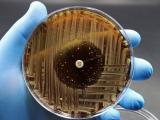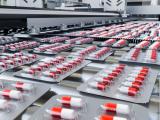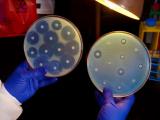May 10, 2002 (CIDRAP News) A committee of experts convened by the Alliance for the Prudent Use of Antibiotics (APUA) says that antibiotics should not be used in agriculture except to treat sick animals and protect healthy animals threatened by disease in the herd or flock.
To protect the effectiveness of antibiotics used in medicine, the nine-member panel recommends that antibiotics other than ionophores and coccidostats not be used to promote animal growth or feed efficiency. Further, fluoroquinolones and third-generation or later cephalosporins should not be used in farming except to treat persistent infections in individual animals, the panel says. The recommendations are presented in a lengthy collection of articles published in Clinical Infectious Diseases.
"The effectiveness of antibiotics is being steadily eroded by their indiscriminate use both in humans and animals," Michael Barza, MD, co-chair of the Facts about Antimicrobials in Animals and the Impact on Resistance (FAAIR) Scientific Advisory Panel, stated in an APUA news release. APUA is a nonprofit scientific organization. The FAAIR panel reviewed about 500 published studies while working on its report for 18 months, according to APUA.
APUA said its report is the first to examine both the transfer of antibiotic resistance through the food chain and the spread of bacteria from farm waste in the environment. The use of manure as fertilizer and the storage of swine wastes in lagoons "are implicated in contamination of the environment with resistant bacteria," the report states. The document stresses an ecological perspective on antibiotic resistance. "Antimicrobial use anywhere, at any time, can increase resistance in microbes anywhere else," it says.
Besides those mentioned, the committee makes several other policy recommendations, including the following:
- Antimicrobials should be used in animals only when prescribed by a veterinarian.
- Pharmaceutical manufacturers and importers should report the quantities of antimicrobials produced, imported, and sold.
- Regulatory agencies should consider the ecology of antimicrobial resistance in assessing the human health risk associated with farm use of antibiotics. Risk assessments should take into account "both direct and environmentally mediated human health effects of agricultural antibiotic use."
- More research should be done on the ecology of antimicrobial resistance in agriculture, especially the effects of antimicrobials as environmental contaminants near farms where the drugs are used.
- Regulatory agencies should provide for rapid review of alternatives to antimicrobials.
The panel estimates that antimicrobial resistance causes 29,379 additional nontyphoidal Salmonella infections each year, leading to 342 hospitalizations and 12 deaths. Resistance also leads to an additional 17,668 infections with Campylobacter jejuni each year, resulting in 95 hospitalizations, the committee estimates.
Further, "Data for Salmonella and Campylobacter infections suggest that antimicrobial resistance strains are somewhat more virulent than susceptible strains, either via prolonged or more severe illness," the report states. The panel also estimates that fluoroquinolone-resistant infections stemming from the use of antibiotics in food animals lead to 400,000 additional days of diarrhea annually in the United States.
"The committee concludes that the elimination of nontherapeutic use of antimicrobials in food animals and in agriculture will lower the burden of antimicrobial resistance in the environment, with consequent benefits to human and animal health," the report says.
See also:
Table of contents for the APUA report in Clinical Infectious Diseases
http://www.journals.uchicago.edu/toc/cid/34/s3























